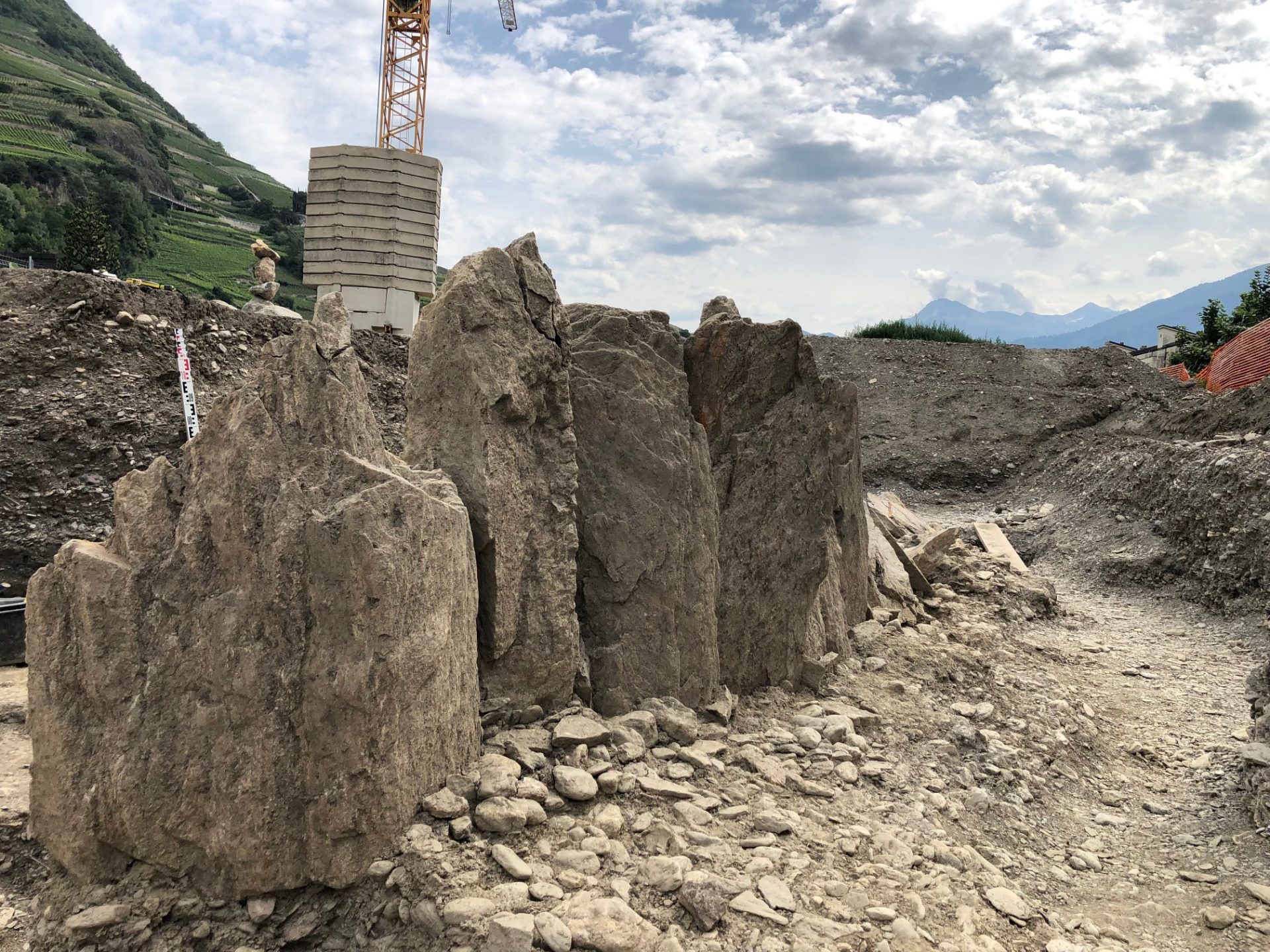A team of archaeologists has uncovered an alignment of menhirs during construction works in the commune of Saint-Léonard, in the canton of Valais, Switzerland.
A menhir, meaning “stone” and “long” was adopted from French by 19th-century archaeologists, and is a large megalithic standing stone placed upright. They can be found individually as monoliths, or as part of a group of similar stones in circular and linear formations.
Excavations were conducted by the regional office of Saint Léonard, in collaboration with the cantonal office of Archaeology of the Canton of Valais, in which the researchers unearthed 13 medium sized menhirs.
A Carbon-14 analysis is currently being conducted to date the stones, but archaeologists believe they probably originate from the Bronze Age, although local press cite the Neolithic period.
The region around Saint Léonard was very active during Neolithic times, evident by the nearby rock carving at Crête Des Barmes, and the linear arrangement of Menhirs in the town of Sion 5 km’s away.
Once the on-site survey of the stones is completed, they will be removed for further inspection, before discussions on how the stones can be best used to benefit the local community.
Header Image Credit : Municipal administration – St-Léonard





